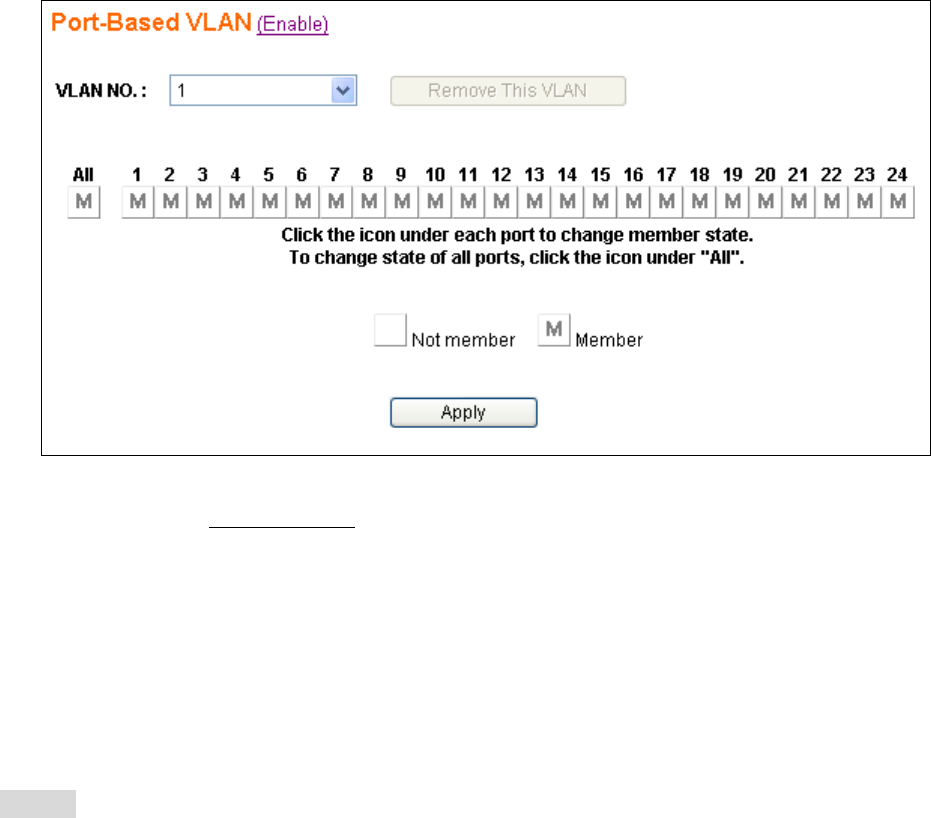
2.5 Port-Based VLAN
The port-based VLAN divides the ports into different Virtual LAN domain groups. After setting the
port-based VLAN, the different VLAN groups can’t access each other. The VLAN initial setting
page is shown as below:
You need to click the
Enable/Disable link text to enable/disable the port-based VLAN. When
port-based VLAN is enabled, the 802.1Q VLAN will be disabled automatically. The port-based
VLAN and 802.1Q VLAN cannot co-exist at the same time.
You can add, delete, and modify the port-based VLAN for your needs. This system supports up to
32 port-based VLAN groups for manual entry. The following pages will describe in detail how to
configure the port-based VLAN.
NOTE: A default port-based VLAN entry (No=1) is initially created by the system. This VLAN
entry contains members for all ports. It can be regarded as no VLAN function because all
ports are in the same group and no traffic isolation between any two ports. If there are new
port-based VLAN groups created, the VLAN No. 1 will contain no members. The group No. 1
is a read-only VLAN group. And there are only 2 situations for this VLAN – all ports are
member ports, and all ports are not member ports.
14


















